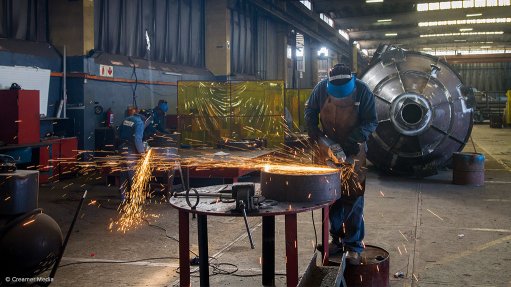
Photo by: Duane Daws
Difficult trading conditions in the country are reflected in Statistics South Africa’s latest manufacturing numbers, with production having decreased by 1.6% year-on-year in September.
However, Nedbank analysts said in a release that the latest set of production figures suggests that the economic recovery, which started off a low base in the second quarter, continued into the third quarter.
Still, they noted that the underlying pace was too slow and patchy to translate into any meaningful demand pressure on prices. “In contrast, the rand’s recent slide and highly uncertain outlook are expected to weigh on the Reserve Bank’s Monetary Policy Committee (MPC) when it meets later this month,” they highlighted.
With the rand vulnerable to further sovereign risk ratings downgrades ahead of the African National Congress elective conference early next month, the MPC is likely to remain cautious, leaving interest rates unchanged for the rest of the year. “A slight easing in rates is still possible in the first half of next year as inflation is forecast to drift below 5%, but much will depend on developments in the rand.”
The decrease was spurred by a 7% decline in the wood and wood products, paper, publishing and printing sector; a 2.5% drop in the petroleum, chemical products, rubber and plastic products industry; and a 4% drop in the motor vehicles, parts and accessories and other transport equipment industry.
Seasonally adjusted manufacturing production also decreased by 0.8% in September compared with August. This followed month-on-month changes of 1.4% in July and 0.3% in August .
Seasonally adjusted manufacturing production increased by 1% in the third quarter of 2017 compared with the second quarter of the year. Six of the ten manufacturing divisions reported positive growth rates over this period.
The largest contributions to the 1% increase were made by petroleum, chemical products, rubber and plastic products, up 3.7%; basic iron and steel, non-ferrous metal products, metal products and machinery up, 2.4%; and motor vehicles, parts and accessories and other transport equipment, up 1.6%.
Looking ahead, Nedbank believes that manufacturing production will improve further off a low base in the final quarter of this year and into 2018.
“Better performances are expected in most export-orientated industries, supported by stronger global growth and slightly firmer international commodity prices.
“Although underlying demand conditions for import-competing industries will probably remain sluggish, hurt by fragile consumer and business confidence, some improvement is nonetheless expected off a low base throughout 2018,” Nedbank stated.